The Ram tank, a superior alternative to the American Medium Tank M3, was the pride of Canada’s tank industry. Its combat characteristics surpassed its predecessor. However, Canada didn’t hold this lead for long. The Medium Tank T6, a prototype of the famous Sherman tank, reached the Aberdeen Proving Grounds before the first Ram did. This tank surpassed not only its predecessor, but also its Canadian cousin. The issue of replacing the Ram arose not too long after, beginning the story of the Grizzly tank, a Canadian copy of the Medium Tank M4A1.
Stubborn Ram
The Ram’s star began to set before it fully rose. Its place in production was threatened on June 13th, 1941, before it was even properly in mass production. It was time to choose tanks to build in 1942, and the American T6 was already looking more promising. The Canadian Valentine was also going to be replaced by the Churchill tank.
The Canadian cruiser tank was in a rocky position. The Ram II had a 57 mm 6-pounder gun which did not fire an HE shell. A decision was made to not build a close support tank armed with a 95 mm howitzer. The Sherman’s 75 mm universal gun looked much more promising. The wider turret ring of the American tank also allowed for a wider array of modernizations. The tank’s designers were eyeing the 76 mm gun, but calculations showed that the 75 mm, let alone 76 mm, would not fit in the Ram tank. The turret ring was too narrow, and the entire hull would have to be redesigned to fit a wider one.
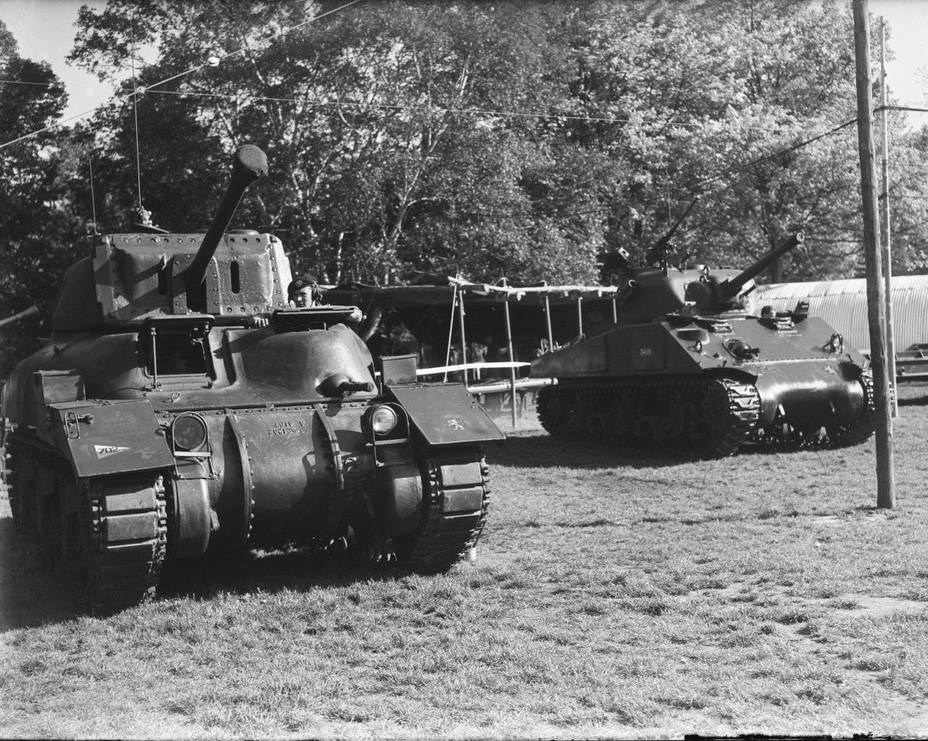
The Ram also lost to the Sherman in other categories. A Sherman outran a Ram tank in a race held on July 30th, 1942, showing an average speed of 28 kph against the Ram’s 25, despite having the same engine. The Ram also had a fuel system malfunction due to a clogged filter after the race, which did not help its reputation. To be fair, the tank had already driven for more than 4200 km and was fairly worn, but not so much that it would have disqualified it from the trials.
Another Canadian tank demonstrated an average speed of 26.7 kph during a long run and 34.8 kph during a short one. The Medium Tank M4A4, the slowest and clumsiest representative of the Sherman family, clocked in at 33.8 and 40 kph respectively, all while driving on a road soaked in rain. The Sherman was also easier to drive, as the driver didn’t have to shift gears as often off-road. It had a more comfortable driver’s station and could accelerate faster. Other crewmen were also more comfortable, especially when exiting the tank. Their vision was also better, especially when it came to the commander.
Comparisons between the Ram and Sherman grew more frequent by the spring of 1943. As issues with 75 mm AP ammunition were cleared up, the advantages of the 75 mm gun over the 6-pounder were clear. Despite the difference in calibers, the ammunition capacities were not radically different. The Sherman carried 94 rounds of ammunition compared to the Ram’s 105. The Sherman’s .50 caliber machine gun was also much more useful than the Ram’s .30 cal. The Sherman’s sights were also superior. Work was done to get the Ram up to the Sherman’s level at least when it came to armament, but it was far too late. Plans to modernize 700 Ram tanks were cancelled by the end of 1943.
Good vs. good enough
It was clear that the Sherman surpassed the Ram back in 1941. The Canadian Department of Munitions & Supply (DM&S) proposed cancelling production after the 150th tank, in the spring of 1942. Everything was going according to plan. The British Military Mission in Canada even decided on which tanks to build on March 26th, 1942. The Montreal Locomotive Works (MLW) that used to produce Ram tanks would switch to the Sherman II (Medium Tank M4A1) and the Angus Shops that built Valentines would switch to the Sherman III (Medium Tank M4A2).
These tanks received new names on July 25th. The Canadian M4A1 would be called “Buffalo”, and the M4A2 would be “Bear”. The name of the M4A1 changed on October 6th. It was argued that the bison was already taken by the 79th Armoured Division, plus the animal came close to extinction in the 19th century, which was not not a very encouraging phenomenon. Instead, prominent Canadian commander Andrew McNaughton suggested another animal, the Grizzly bear. In his words, this was a warlike, clever, and powerful Canadian animal. McNaughton’s suggestion was accepted.
This didn’t mean that the tank would go into production any time soon. There were several reasons for this. One was that the Canadian military decided to sit between two chairs. On one hand, in order to simplify production and supply the factory was instructed to develop a vehicle that was as close as possible to the American tank. This would allow the use of parts sources from the USA. However, the military had several complaints about the Sherman that they wanted corrected in this tank. The idea to build an “anti-tank” and a close support variant of the tank was revived. An idea of a tank with a 17-pounder gun was proposed alongside those with 6-pounder and 95 mm guns, although it was not yet clear how to fit such a large gun into a Sherman turret.
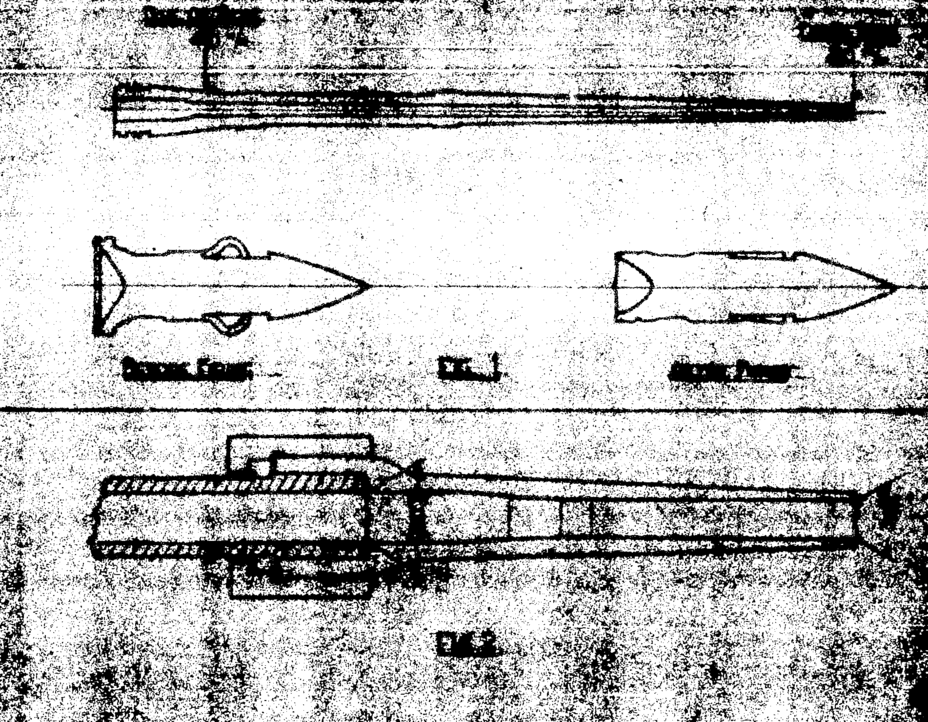
There was no consensus on what kind of tank to build. McNaughton defended the idea of a tank with a 75 mm gun, but was also not against boosting the tank’s firepower. Having familiarized himself with German designs, he even proposed a gun with a tapered bore! The list of desirable features counted 15 other items, from smokescreen devices to a second coaxial machine gun. At the same time, all agreed that the tank would have to mirror its American cousin as closely as possible. On August 26th, 1942, head of the DM&S tank branch B.D. Beamish ran out of patience. He wrote a letter to the Master General of Ordnance, reminding him that any changes made to the M4 would have to be approved by the American Bureau of Ordnance. Chief of Ordnance Brigadier John Christmas was categorically against any changes to the design as long as Canada was relying on American parts. The Americans were not about to start implementing questionable British solutions or carry out custom orders for Canadians. The tank would remain exactly as it was. Another blow was dealt by the end of 1942. It turned out that there was no way to move on from the Wright R975 engine. The Americans needed their diesel engines for their navy and the new Ford V-8 for their own army. The Canadian Bear died before it was even born. Angus Shops was instead tasked with producing components for MLW.
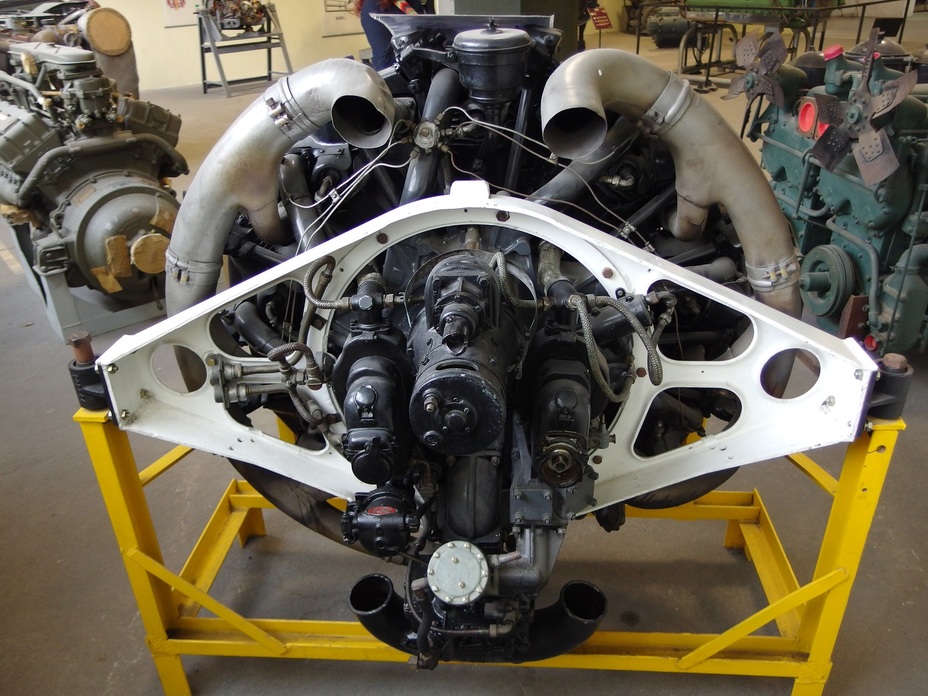
There was another factor that affected the start of Sherman production in Canada. The Americans were not entirely satisfied with their tanks either and began to modernize them. On September 7th, 1942, Major General James Young proposed keeping the Ram in production until a Sherman tank with a 76 mm gun was finished and only then making the change. It became clear that this might take longer than expected when the order for 1000 tanks was cut down to 12 after trials in early 1943.
In early August of 1942, General McNaughton learned from Lieutenant Colonel Evans that the Americans were working on the Medium Tank T20, which had significant advantages over the Sherman. In McNaughton’s opinion, the Ram was still satisfactory, and production ought to continue until the T20 was finished so that Canada could start producing the new tank right away. He was playing a dangerous game, as the Department of National Defense had already promised the British that Sherman production would begin in April of 1943. In the end, the conservative minds turned out to be right. Delays in the T20 program led to the troubling news that the tank would not be ready sooner than late 1944. There was only one solution: Canada had to build Sherman tanks, and fast.
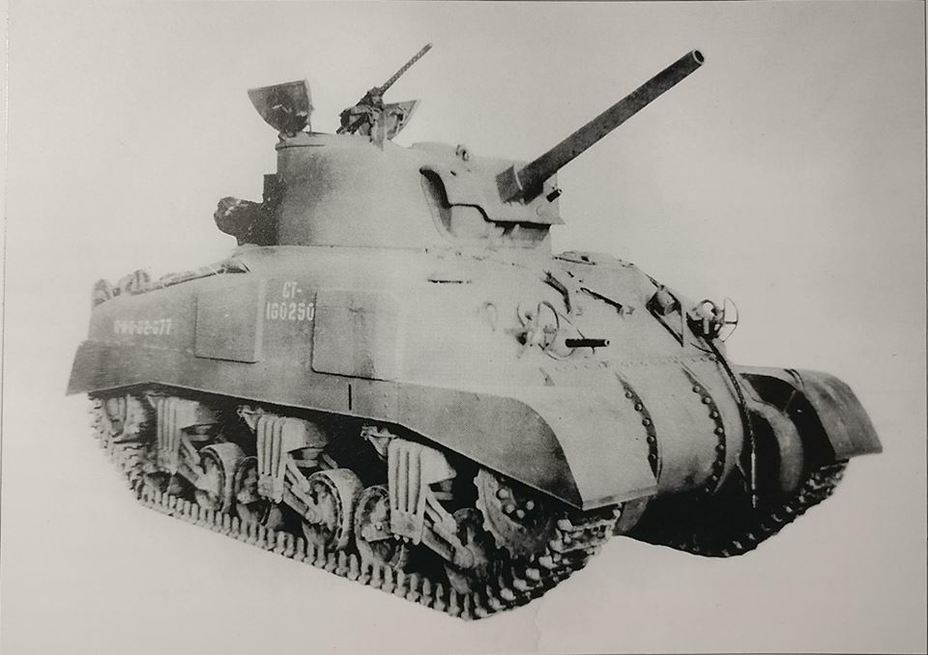
Despite the agreement to build a tank as close to the American model as possible, there were still some differences in design. Canada was experiencing a shortage in rubber at the time, and so replicating American rubberized track links was not the best solution. Instead, the Canadians developed their own CDP tracks (Canadian Dry Pin). The new tracks came with a new drive sprocket that had 17 teeth instead of 13.
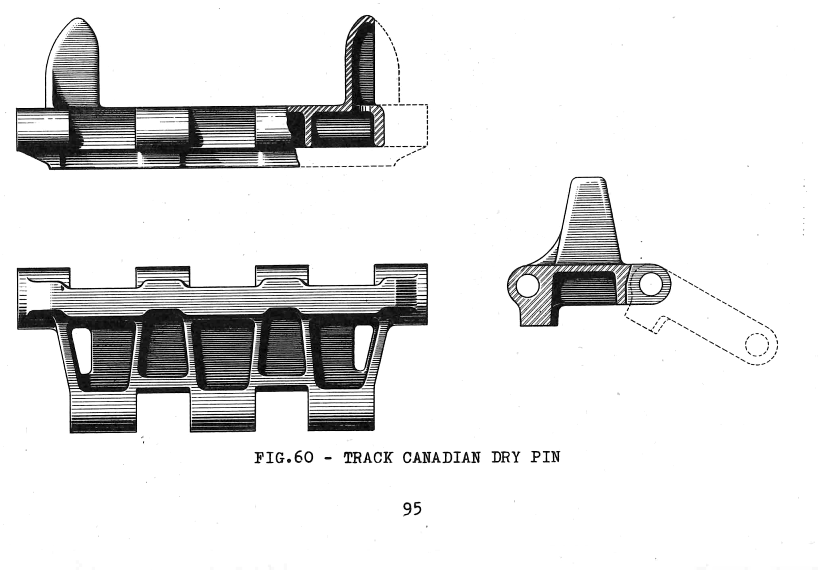
Trials of the metallic tracks showed that their reliability was on par with American ones and that they do not lead to premature wear of the drive sprocket, although the Americans complained that metallic tracks lead to overheating and destruction of the road wheel tires. Following British practice, the tank had a Wireless Set No.19 installed in the turret bustle. A second medkit, 2” bomb thrower, hatch for laying the Snake mine clearing device, a lamp with a red filter, and a grenade rack were all added. The tanks were equipped with Oilgear turret traverse mechanisms.
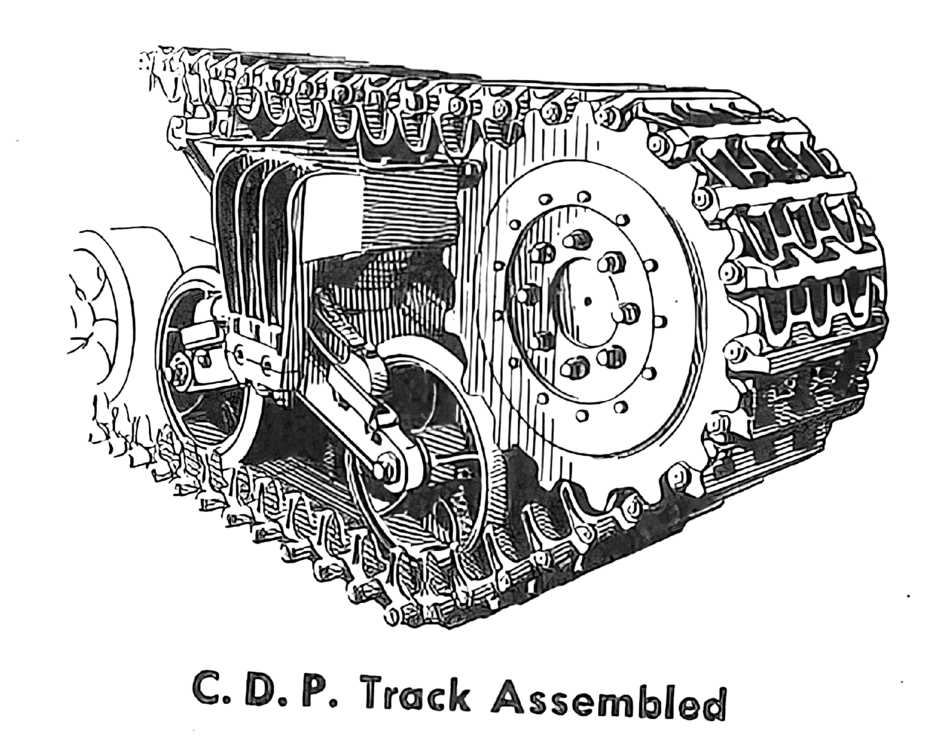
Some sources mix up this new tank with the Ram, assigning it the index M4A5 and 75 mm thick front armour. These theories are not supported by period documents. Additionally, it’s hard to believe that having gained 28 mm of front hull armour the tank would lose weight, coming in at 30,227 kg compared to the original M4A1’s 30,364 kg. Other sources claim that the weight did not change at all. In any case, the tank’s mobility was on the same level as its American relative.

Despite the thinner armour compared to the Ram, penetration trials gave good results. The lower hull fared especially well, as it was assembled by welding and not with rivets. Early Grizzlies had three piece differential covers connected with bolts, but later ones received the same cast differential covers as later Shermans. Despite demands to introduce a separate loader’s hatch like on the Sherman IC and Sherman VC, this was not done. However, unlike the Firefly, the Grizzly did have a travel clamp for the gun on the front.
The tank had the same R-975 engine. Canadian specialists were conservative in their estimates of its lifespan. By their account, it had to go through an overhaul after 100 hours of service and replacement after 300 hours.
Awakening after hibernation
Even though the decision to build the Grizzly was made, production was not rushed. Cancellation of the American order for Rams saddled the DND with 792 old tanks. This shifted the planned start of production from April to June of 1943, but even this was hard to believe. The earliest forecasts promised production of 300 tanks per month by November. The first 600 units would be built with 75 mm guns, then production would switch over to 76 mm guns.
The plans were corrected by early 1943. According to the new plans, production would reach a rate of 150 units per month with the first tanks arriving in the UK on September 15th, 1943. DM&S assured the MGO that production was going according to plan, but by the end of April they had to admit that the expectations for production in July dropped to 49 tanks. This was not entirely the Canadians’ fault, as the M4A1 samples from Lima arrived only on May 29th. To be fair, MLW management was also partially complicit in these delays. Interestingly enough, on May 25th, 1943, the Technical Department of the General Staff (SD Tech) suggested that the American M4A1 should also be called Grizzly, as the two tanks were nearly identical.
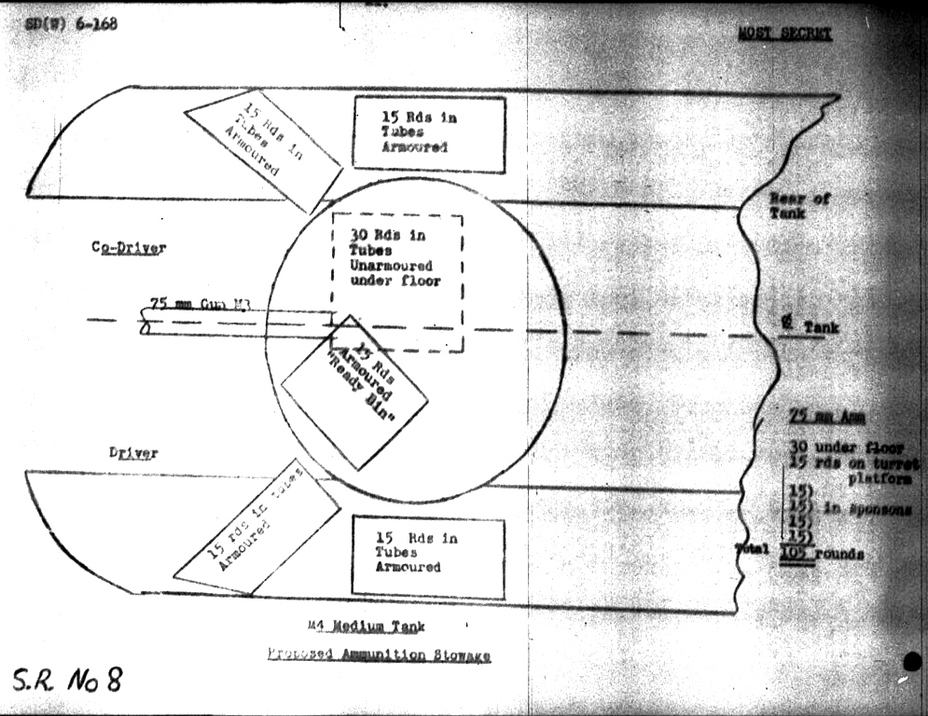
Even though the production deadlines drew ever closer, the tank’s design was still changing. For instance, the decision to use the American M55 sight rather than the British No.39 sight was made only on May 31st, 1943, which didn’t stop the Canadians from trying to convince the Americans to switch over to the British sight until mid-July. On June 13th, almost two weeks after production was due to start, it was decided that a bag for spent brass would not be installed on the tank, as it interfered with the gun stabilizer. The issue of dust shields over the running gear was only resolved on June 17th. On the same day, an inquiry into carrying additional cargo on the tank began. As a result, the Grizzly received its characteristic tarp rack on the back of the turret. The Americans rejected the proposal to include a bin for the crew’s belongings on the rear of the hull.
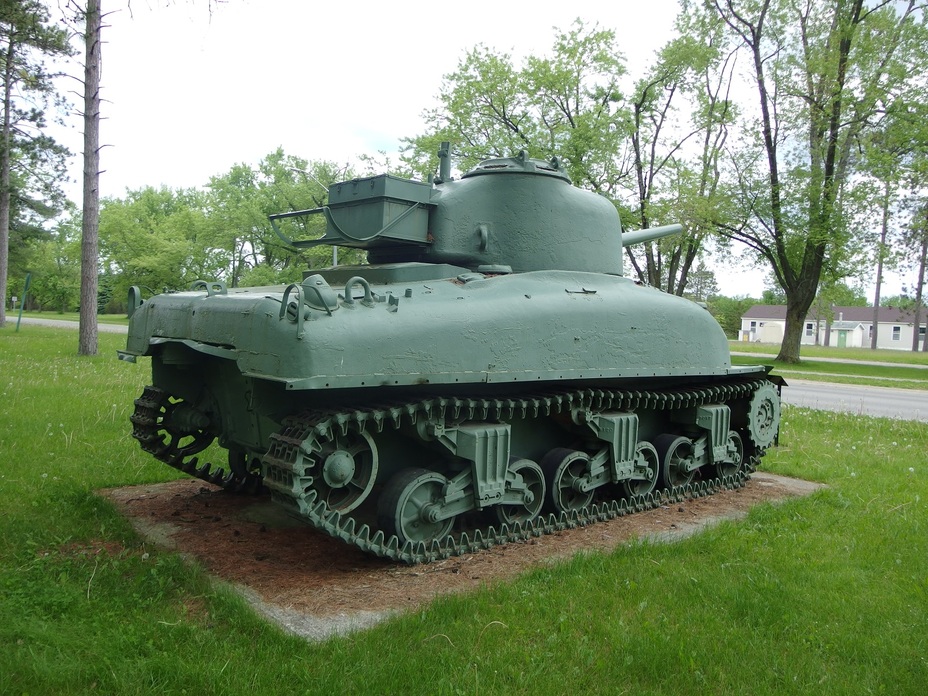
The tank’s position remained shaky. On June 1st, 1943, the Canadian representative in London Colonel Fulton suggested accepting the Medium Tank M4A4 (or Sherman V) that the British used in large numbers into service. At first the British were prepared to equip three out of the four Canadian brigades with these tanks, but eventually agreed on equipping the fourth. This course of action was reasonable, as the first six Grizzlies only began production in the middle of the month. These tanks and 17 more were finished by the end of October.
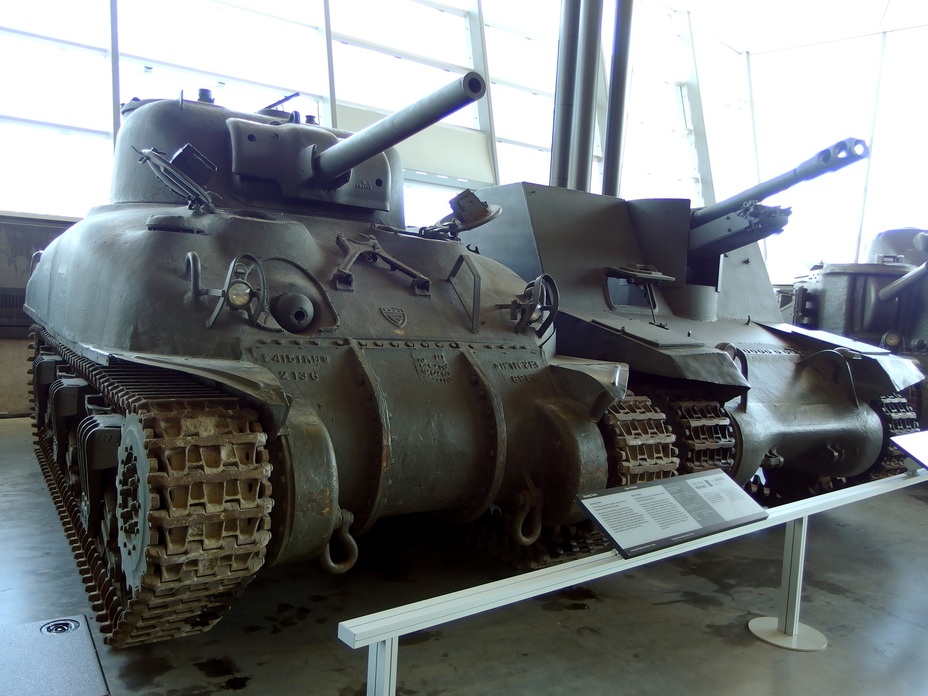
On September 2nd, 1943, the production run of Grizzly tanks dropped from 2137 to 250. Registration number blocks CT.160194 – CT.160794 and CT.163911 – CT.164074 were reserved for them. The decision that would spell the death of the tank was made on December 9th. These tanks would not be going into combat. Production ended prematurely in January of 1944 with 188 vehicles completed. The reason was not even that there was no point in fielding yet another Sherman variant in the already heterogeneous Canadian army. MLW also found its calling with the excellent Sexton SPG that went into production at nearly the same time as the Grizzly. This vehicle was much more useful, and it pushed the Grizzly out of production.
Even though the Grizzly was no longer needed, there was still a place for them. On September 1st, 1943, three vehicles were allocated to the proving grounds in Ottawa, 22 for Base Borden, two were retained for prototypes of the Skink SPAAG. On October 20th, 43 more tanks were allocated for Borden and five for the repair school in Barriefield, Ontario.
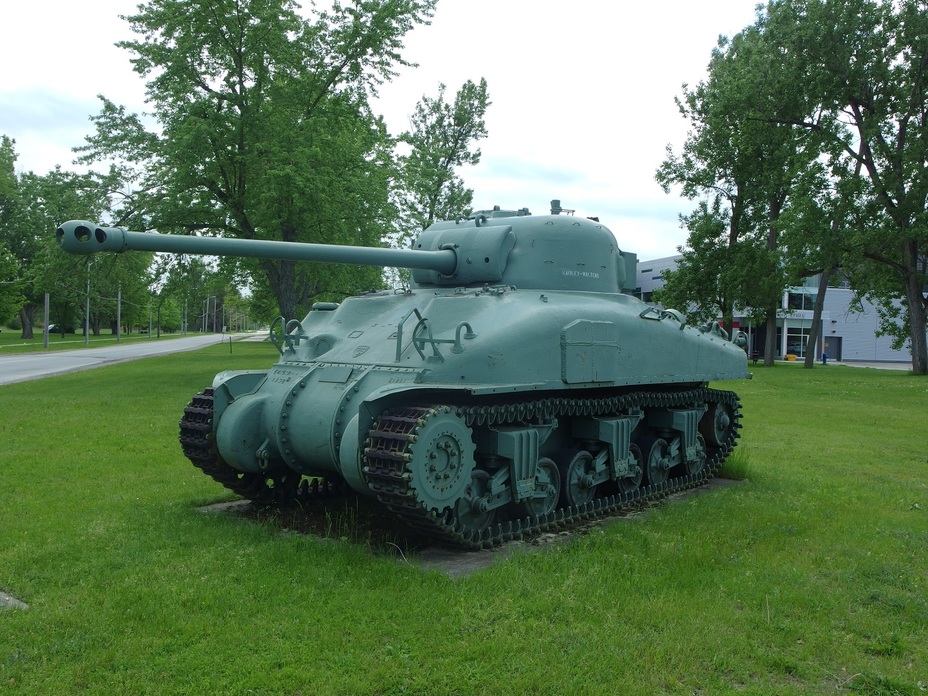
The Canadians ordered three turrets with 17-pounder guns to convert three Grizzly tanks into Fireflies in late 1944. One Grizzly was also used for trials of the Horstmann suspension. The clearance with this suspension dropped from 432 to 368 mm, which was lower than acceptable for American medium tanks. Driving with this suspension was a lot smoother, but that didn’t outweigh its drawbacks. The Americans refused to put this suspension into production, arguing that the HVSS (Horizontal Volute Spring Suspension) surpassed it in all parameters.
In the fall of 1944, the DND and British War Office made a deal for the sale of 75 Skinks left over after the cancellation of the Skink program. The tanks were ready to be sent in January of 1945, but only 65 were ever shipped out. The Canadians were ready to sell 18 more, but the British had no money for them. The Grizzlies were intended for training only, and did not go through a modernization process like other Sherman tanks arriving from North America.
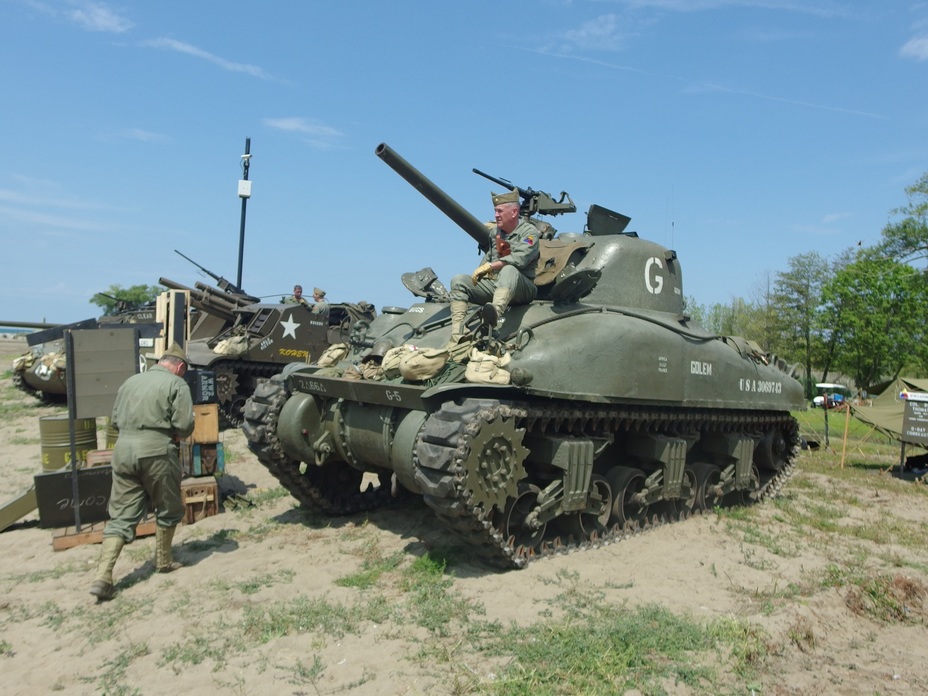
Canada still had 23 used and 83 new Grizzlies on hand by August 16th, 1945. Unlike the Rams, they were not scrapped after acquiring the superior Medium Tanks M4A2E8 from the Americans. Only a few were converted into APCs and prime movers. The Grizzly tanks were even modernized in 1946.
Canadian tanks spread across the whole world after the war ended, and the Grizzly was no exception. 57 tanks and 25 Kangaroo APCs were sent as military assistance to Portugal in 1957. In the late 1980s Welsh businessman Ian MacGregor purchased a large amount of surplus vehicles from Portugal, including 40 Grizzlies. The tanks cost about £7500 apiece. The tanks were later sold to collectors. Some of them were restored to running order and can be seen at reenactments to this day, usually posing as American M4A1 tanks.
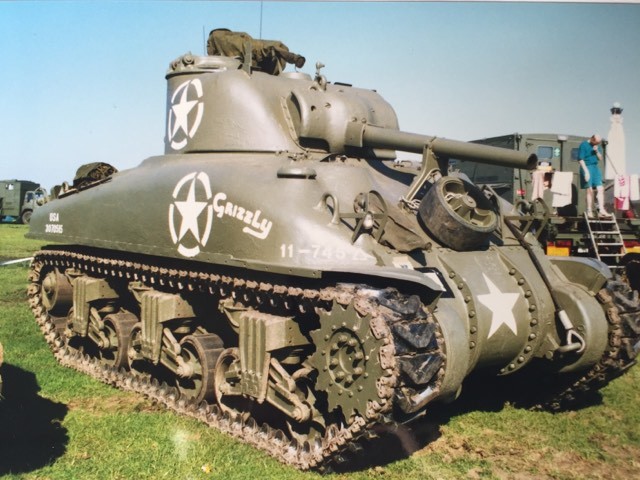
An extra factory building the Medium Tank M4A1 was not the worst idea, but the all too common attempt to have one’s cake and eat it too destroyed any chance the Grizzly had at a long career or mass production. Like its predecessor, the Ram, this tank was not destined to ever see the field of battle.







